Knowledge Management Tools Explained: Types, Differences, and Examples [2024]

Companies these days generate loads of information on every front. Whether it's internal knowledge, onboarding materials, help resources, or business data, the amount of information is huge. The challenge that comes with it is to collect, store, and make it easily accessible for wider audience.
That's where knowledge management tools come in. These tools help your business collect and manage information among your employees and customers. Storing and organizing knowledge helps your organization improve processes, workflows, and, in the long run, make better business decisions. Sharing knowledge with customers, on the other hand, provides them with customer self-service.
There's so many knowledge management tools to choose from. From knowledge bases and wikis to learning and knowledge management software tools, I'll explore each tool's benefits and feature.
Then, I'll provide some real-life examples of businesses that successfully use knowledge management tools.
What is a knowledge base?
A knowledge base (KB) is a centralized repository of information that is used to organize, store, and retrieve knowledge. It serves as a resource where information is collected, structured, and made accessible to users. Knowledge bases are employed in various contexts, including businesses, support teams, IT support, and educational institutions. The primary goal of a knowledge base is to provide a single source of truth for specific topics, helping users find accurate and relevant information quickly.
Key characteristics of a knowledge base include:
- Structured information: Knowledge bases organize information in a structured manner, often using categories, topics, or a hierarchical structure. This organization helps users navigate and locate the information they need.
- Search functionality: Knowledge bases typically include robust search capabilities to enable users to find information efficiently. Users can input keywords or phrases to locate relevant articles or documents within the knowledge base.
- Authoritative content: The information stored in a knowledge base is intended to be authoritative and reliable. It often includes documentation, best practices, troubleshooting guides, FAQs, and other types of content that provide accurate and up-to-date information.
- Access control: Many knowledge bases have access control features to manage who can contribute to and edit the content. This ensures that the information remains accurate and trustworthy.
- Integration with workflows: Knowledge bases are often integrated into various workflows and systems. For example, they might be linked to customer support systems, help desk software, or internal collaboration platforms.
- Versioning: Some knowledge bases include versioning features, allowing users to track changes made to articles over time. This can be useful for auditing, reviewing edits, and reverting to previous versions if needed.
- Multimedia support: In addition to text-based content, knowledge bases may support multimedia elements such as images, videos, and charts to enhance understanding and clarity.
Examples of knowledge bases include:
- Customer support knowledge base: Used to provide answers to frequently asked questions, troubleshooting guides, and product documentation for customers.
- Internal knowledge base: Used within organizations for employee training materials, policy documents, and best practices.
- IT knowledge base: Contains technical documentation, solutions to common IT issues, and system configuration details for IT professionals.
- Educational knowledge base: Used in educational institutions to store course materials, lecture notes, and reference materials for students and faculty.
The implementation and structure of a knowledge base can vary based on the specific needs and goals of the organization or community using it.
What is a wiki?
A wiki is a type of collaborative website or online platform that allows users to create, edit, and link content easily. The term "wiki" comes from the Hawaiian word for "quick," reflecting the speed at which users can add and modify content. The defining feature of a wiki is its open and collaborative nature, allowing multiple users to contribute and edit content in a shared environment.
Key characteristics of a wiki include:
- Collaborative editing: Wikis enable collaborative editing, allowing multiple users to contribute to and modify content. Changes are often tracked, and previous versions can be reviewed or restored.
- Hyperlinking: Wikis use hyperlinks to connect pages, creating a web of interconnected articles. This allows for easy navigation between related topics and promotes a non-linear exploration of information.
- User-generated content: Content on a wiki is typically created and maintained by the users of the platform. This can lead to a dynamic and evolving repository of information.
- Open access: Many wikis are openly accessible, meaning that users can view, edit, and contribute without the need for special permissions. However, access controls can be implemented to restrict editing rights.
- Revision history: Wikis maintain a revision history for each page, documenting changes made over time. This versioning system allows users to track edits, revert to previous versions, and monitor the evolution of content.
- Text markup language: Wikis often use a simple text markup language (such as MediaWiki markup for Wikipedia) to format and structure content. This allows users to add headings, links, lists, and other formatting without the need for advanced technical skills.
- Search functionality: Wikis typically include search features to help users quickly find relevant information within the vast amount of interconnected content.
One of the most well-known examples of a wiki is Wikipedia, an online encyclopedia that allows users from around the world to create and edit articles on a wide range of topics. However, wikis are used in various contexts beyond encyclopedias, including project documentation, knowledge sharing, and collaborative writing.
Wikis can be hosted on dedicated platforms or created using wiki software that can be installed on web servers. The collaborative and open nature of wikis makes them a powerful tool for building and sharing knowledge in a decentralized manner.
Differences between a knowledge base and a wiki
Both wikis and knowledge bases are tools designed to organize and store information, but they have some key differences in terms of their structure, purpose, and functionality. Here are some of the main distinctions:
- Editing and collaboration:Wiki: Wikis are typically open and collaborative platforms where multiple users can contribute and edit content. Changes are often tracked, and users can revert to previous versions if needed. Wikipedia is a well-known example of a wiki.
- Knowledge base: Knowledge bases may have collaboration features, but they often have more controlled access. There might be specific roles and permissions determining who can edit or contribute information.
- Structure:Wiki: Wikis are often characterized by a flat structure, with interconnected pages and hyperlinks. Content is usually organized through a series of linked articles.
- Knowledge base: Knowledge bases may have a more hierarchical or categorized structure, with information organized into sections, categories, or a predefined taxonomy.
- Purpose:Wiki: Wikis are generally used for collaborative documentation and information sharing. They are dynamic and can be continually updated by a community of users.
- Knowledge base: Knowledge bases are often designed to serve as repositories of structured information, providing solutions to common problems or answering frequently asked questions. They may have a more formal and static nature.
- Use case:Wiki: Wikis are often used for projects, documentation, and open collaboration. They excel in scenarios where a community of users needs to contribute and maintain information collectively.
- Knowledge base: Knowledge bases are commonly used in customer support, help desks, and internal knowledge management systems. They are focused on providing specific information and solutions to users.
- Access control:Wiki: Wikis often have more open access, allowing a wide range of users to edit and contribute. Access control might be present but is generally more permissive.
- Knowledge base: Knowledge bases often have stricter access controls, with defined roles and permissions to control who can create, edit, or delete content.
- Searchability:Wiki: Wikis usually have powerful search features, helping users quickly find information within a large repository of interconnected pages.
- Knowledge base: Knowledge bases also prioritize search functionality, but they may offer additional features like categorization and tagging to enhance content discoverability.
While both wikis and knowledge bases are tools for organizing and sharing information, wikis tend to emphasize collaboration and flexibility, while knowledge bases often focus on providing structured, authoritative information in a controlled environment. The choice between them depends on the specific needs and goals of the organization or community using them.
Knowledge management tools examples
KnowledgeBase
KnowledgeBase is a knowledge base solution that allows companies to set help centers and knowledge bases both for customers and employees.
This affordable tool has a plenty of smart, AI-based features that make creating and managing content easier. You can pack it with media-rich help articles, product manuals, troubleshooting guides, and answers to frequently asked questions.
This tool provides a user-friendly interface, so any action gets done quickly and easily. The editor supports different media formats, including images, videos, and GIFs.
Apart from that, KnowledgeBase offers a variety of other features, such as a customizable help center, QuickAnswer, analytics, or multiple knowledge bases.
Another interesting feature of the tool is LiveChat integration, which offers a live chat knowledge base. Thanks to this feature, customers can browse help materials before contacting an agent via chat. At the same time, agents get faster access to help articles they can send to customers.
Here's 35 knowledge base tools if you want to get into it.

Confluence
Another, one of the most powerful known knowledge management tools come from Atlassian.
They created a widely-used wiki software that allows teams to collaborate to share information within their organization. It's probably the best knowledge management software designed to help organizations organize and manage their information, making collaboration simple and efficient.
It's a powerful tool.
Confluence is highly customizable and comes with a range of plugins and add-on that can be used to extend the functionality of the tool.
For example, users can add integrations with other tools, such as JIRA for issue tracking, task management, or Salesforce for their own customer relationships and management.

Guru
Guru helps companies organize and access internal information.
Guru lets you centralize organizational knowledge using a single repository for businesses to store important information, best practices, and collective knowledge. It improves access to information within a company, so it's great for employee onboarding, internal guides, policies, and best practices.

Document management systems
Another kind of knowledge management tools are document management systems – DMS. They are designed to organize, store, manage, and track digital documents in one place.
These systems allow handling the entire lifecycle of documents, from creation, collaboration to storage and retrieval.
They offer numerous benefits for organizations, including:
- Centralized document storage. DMS provides a centralized repository for storing documents, eliminating the need for scattered file storage and facilitating easy access.
- Improved document organization. DMS allows documents to be organized using folders, tags, metadata, and advanced search capabilities, making locating and retrieving information quickly easier.
- Enhanced collaboration. They facilitate collaborative work by enabling multiple users to access, edit, and review documents simultaneously, regardless of their physical location.
- Version control and document tracking. It tracks document versions, ensuring users work with the most up-to-date information. It also logs document history and provides a clear audit trail of changes and revisions.
- Document security and permissions. DMS offers robust security features, including access controls, user permissions, and encryption, to protect sensitive information and ensure data integrity.
Features of document management tools
Let's see some key features:
- Document capture and import. DMS allows documents to be imported from various sources, such as scanning physical documents, uploading files, or integrating with other software systems.
- Document indexing and metadata. DMS enables the assignment of metadata to documents, such as tags, categories, or custom attributes, making it easier to categorize and retrieve documents based on specific criteria.
- Document collaboration and versioning. DMS supports real-time collaboration, allowing multiple users to work on the same document simultaneously.
- Workflow automation. DMS streamlines document-centric processes by automating workflows, such as document review and approval, ensuring efficient and consistent operations.
- Document security and access control. DMS provides granular control over document access, allowing organizations to set permissions and restrict access based on roles or user groups, safeguarding confidential information.
- Compliance and records management. DMS facilitates compliance with regulatory requirements by enforcing document retention policies, managing records, and providing audit trails.
Examples of document management tools
So let's look at some examples.
SharePoint
SharePoint is a recognized and extensively used document management system developed by Microsoft. With its robust features and integration capabilities, SharePoint has become a go-to solution for organizations seeking efficient document and best knowledge management tools and improved customer satisfaction.
It offers flexible storage options, including document libraries, folders, and metadata-driven tagging, making it easier to categorize and search for documents based on specific criteria. This enhances knowledge management by ensuring that relevant information is easily accessible to users, enabling them to make informed decisions and improve productivity.
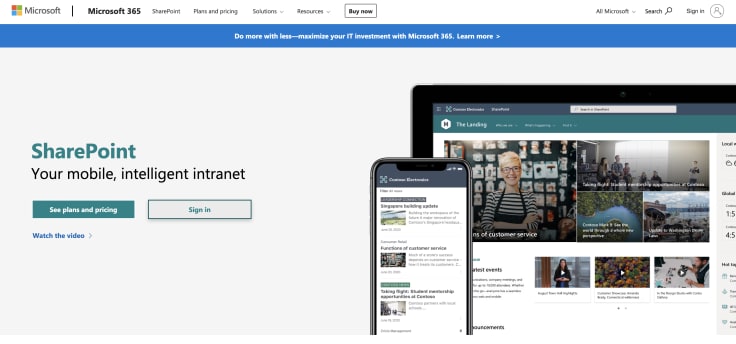
Google Drive
Google Drive is a cloud-based knowledge management tool that offers a user-friendly and intuitive platform for storing, sharing, and collaborating on documents in real time.
As a cloud-based solution, Google Drive allows users to store documents securely in the cloud, eliminating the need for local storage and reducing the risk of data loss. It offers ample storage space and allows users to upload various file types, including documents, spreadsheets, presentations, and more. This ensures that users can store and access a wide range of information within their Google Drive account.
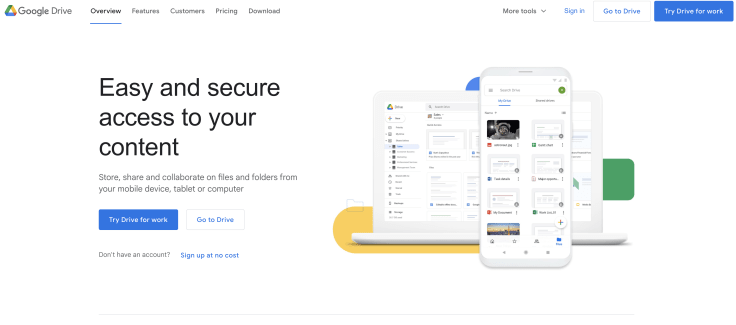
OpenText Content Suite
OpenText Content Suite is an enterprise-level document management system that allows organizations to store, retrieve, version, and manage documents. It supports a wide range of document types and provides robust security features.
Workflow is a knowledge management tool that automates and streamlines document-centric business processes, while integration with other applications simplifies document creation and collaboration.
The platform offers advanced search and retrieval capabilities and is scalable and customizable to meet specific business needs.
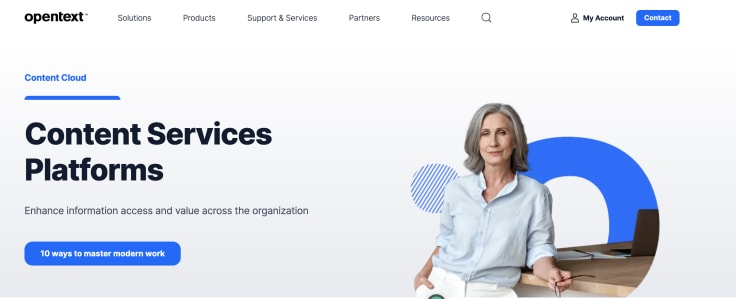
Learning management systems
Another kind of a knowledge management platform are learning management systems (LMS). They are software platforms designed to facilitate the creation, delivery, and management of educational courses and training programs.
LMS serves as comprehensive tools that enable organizations to centralize their learning resources, track learner progress, and provide a seamless learning experience
Some key benefits of LMS include:
- Centralized learning content. LMS allows organizations to store all learning materials, such as courses, modules, presentations, and multimedia, in a centralized location.
- Scalable and consistent learning experience. LMS enables organizations to deliver training programs to many learners, ensuring consistency in content delivery, assessments, and certifications.
- Personalized learning paths. LMS allows learners to access customized learning paths based on their roles, skills, and learning goals.
- Tracking and reporting. LMS provides robust tracking and reporting capabilities, allowing organizations to monitor learner progress, completion rates, and assessment results.
- Collaboration and engagement. Many LMS platforms offer collaboration features like discussion forums, social learning, and interactive assessments.
Key features of learning management tools
Some key features and use cases include:
- Course creation and management. LMS allows instructors and subject matter experts to create and organize courses, modules, and learning materials.
- Learner management. It allows administrators to track learner progress, assign courses, and manage user permissions and roles.
- Content delivery and access control. Using various devices, LMS enables learners to access learning materials anytime, anywhere.
- Assessments and quizzes. They provide automatic grading, feedback, and performance tracking, simplifying the assessment process.
- Reporting and analytics. LMS generates detailed reports and analytics on learner progress, completion rates, and assessment results.
- Certification and compliance. LMS facilitates creating and managing credentials, enabling organizations to track and issue certificates upon successfully completing courses or training programs.
Examples of learning management systems
Let's look at recent examples of the best knowledge management tools.
Canvas
Canvas is a cloud-based learning and project management system that gained widespread popularity for its user-friendly interface and comprehensive functionality. It is widely adopted by educational institutions, universities, K-12 schools, and corporate training departments. Canvas stands out for its robust features facilitating course management, collaboration, assessment, and communication.
Canvas offers powerful course authoring tools that empower instructors to create engaging and interactive learning experiences. Instructors can upload course materials, multimedia content, and assignments and develop quizzes and assessments. The platform provides a variety of question types and grading options, allowing for flexibility in evaluating student performance.

Adobe Captivate Prime
Adobe Captivate Prime is a top-notch learning management system that caters to the specific needs of businesses and organizations for corporate training and e-learning initiatives. Its extensive features and capabilities make it an excellent choice for delivering effective training programs.
One of the most exceptional features of Adobe Captivate Prime is its robust course creation capabilities. The platform provides tools and templates that allow instructional designers and trainers to develop engaging and interactive courses. They can incorporate multimedia elements, quizzes, simulations, and branched scenarios to create immersive learning experiences. The intuitive interface and drag-and-drop functionality make it easy to design courses without requiring extensive technical expertise.
Certifications are vital in corporate training, and Adobe Captivate Prime offers robust certification management capabilities. The platform enables organizations to create and manage certificates based on completing specific courses or learning paths. This feature ensures that learners receive recognition for their accomplishments and motivates them to continue their professional development.
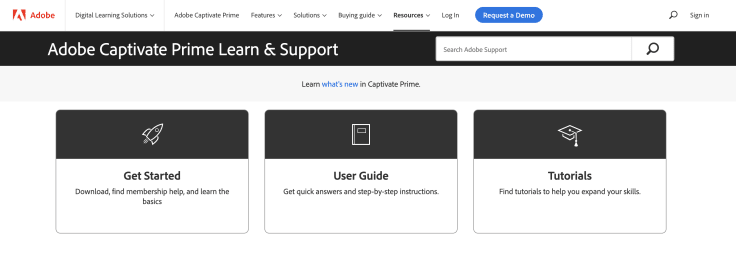
Moodle
Moodle is an open-source LMS used worldwide in education and corporate training. It offers customizable course creation tools with multimedia, assessments, and collaborative features. Instructors can track learner progress and performance with comprehensive reporting options.
Moodle is customizable and integrates with external tools. It offers administrative features for user management and data security. Its user-friendly interface is accessible on all devices.
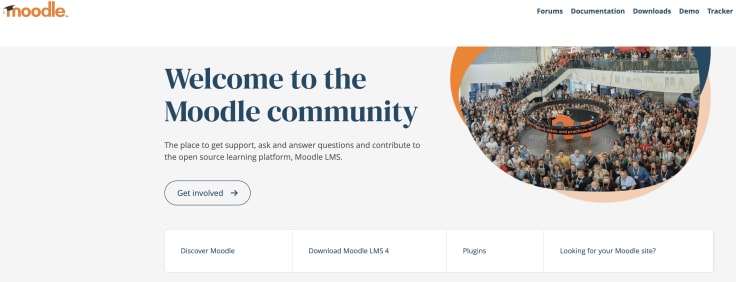
Over to you
Knowledge management tools are crucial to successful organizational information sharing, collaboration, and learning.
These knowledge management tools, including knowledge bases, wikis, collaboration tools, document management systems, and learning management systems, offer features that support knowledge creation, management, and accessibility.
Organizations that pay attention to these knowledge management tools can avoid missing out on the full potential of information and collaboration, leading to decreased efficiency, productivity, and innovation. Implementing these tools fosters a culture of continuous learning, facilitates effective knowledge sharing, and enables individuals and teams to access relevant information swiftly.
Knowledge management tools are indispensable for organizations to unlock their collective intelligence, promote collaboration and other customer relationships, and establish a continuous learning and innovation culture.
By using them effectively, organizations can fully leverage their knowledge assets, improve decision-making, and stay ahead in the ever-changing digital landscape.






